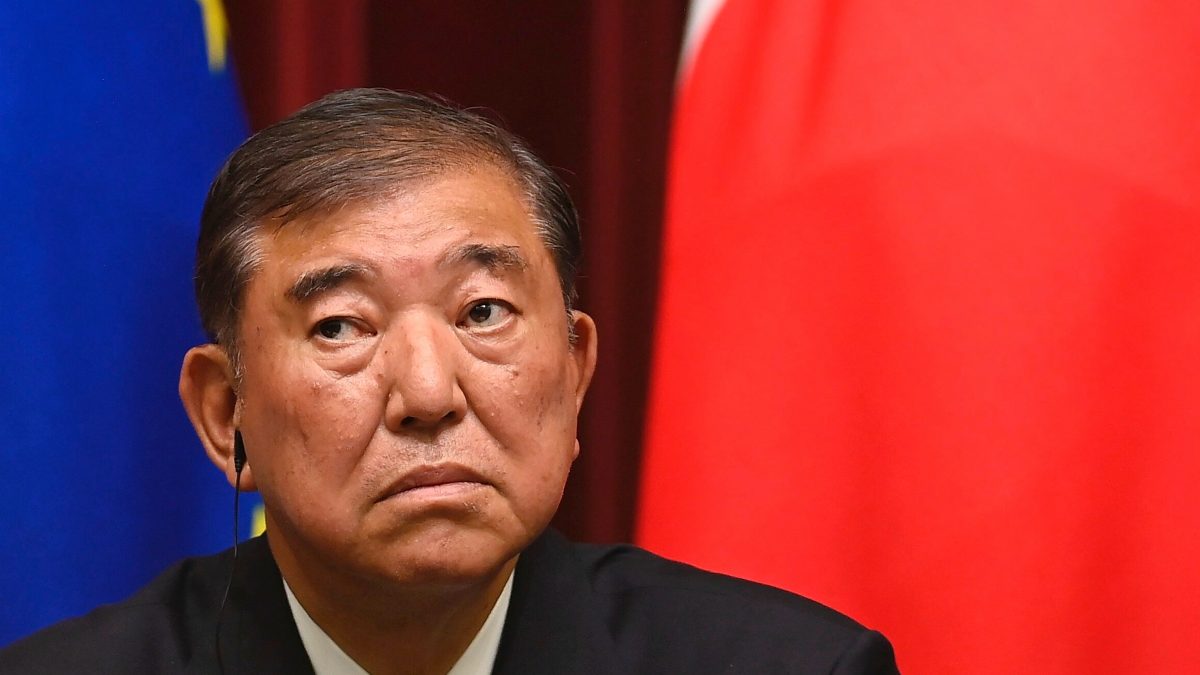Prime Minister Shigeru Ishiba promised on Wednesday to remain in power to supervise the implementation of a new Japan-US tariff pact, amid media speculation and rising calls for his resignation following his governing party’s historic setback.
At party headquarters, Ishiba met with senior members of his Liberal Democratic Party (LDP), as well as former Prime Ministers Taro Aso, Fumio Kishida, and Yoshihide Suga.
He later told reporters that they did not discuss his resignation or a new party leadership contest, but rather the election results, voter dissatisfaction, and the urgent need to avoid party discord.
Despite his business-as-usual demeanour, Ishiba is under increasing pressure to resign after the LDP and junior coalition partner Komeito lost their majority in Sunday’s election in Japan’s 248-member upper house, the smaller and less powerful of Japan’s two chambers of parliament, shattering his grip on power.
It followed a defeat in the more powerful lower house in October, and his coalition now lacks a majority in both chambers of parliament, making it much more difficult for his administration to adopt programs and exacerbating Japan’s political instability.
Despite calls from within and beyond his party for his resignation, Ishiba says he plans to remain on to address important issues, such as tariff discussions with the United States, in order to avoid creating a political vacuum.
Ishiba “keeps saying he is staying on. What was the public’s verdict in the election all about?” said Yuichiro Tamaki, head of the surging Democratic Party for the People, or DPP.
Impact Shorts
More ShortsAt the LDP, a group of younger lawmakers led by Yasutaka Nakasone started a petition drive seeking Ishiba’s early resignation and renewal of party leadership.
“We all have a sense of crisis and think the election results were ultimatum from the voters,” he said.
Japanese media reported that Ishiba is expected to soon announce plans to step down in August.
The conservative Yomiuri newspaper said in an extra edition on Wednesday that Ishiba had decided to announce his resignation by the end of July after receiving a detailed report from his chief trade negotiator, Ryosei Akazawa, on the impact of the US tariffs on the Japanese economy, paving the way for a new party leader.
Ishiba denied the report and said that he wants to focus on the US trade deal, which covers more than 4,000 goods affecting many Japanese producers and industries. He welcomed the new agreement, which places tariffs at 15% on Japanese cars and other goods imported into the US from Japan, down from the initial 25%.
Still, local media are already speculating about possible successors. Among them are ultraconservative former Economic Security Minister Sanae Takaichi, who lost to Ishiba in September. Another conservative ex-minister, Takayuki Kobayashi, and Agriculture Minister Shinjiro Koizumi, the son of former popular Prime Minister Junichiro Koizumi, are also seen as potential challengers.
In Sunday’s election, voters frustrated with price increases exceeding the pace of wage hikes, especially younger people who have long felt ignored by the ruling government’s focus on senior voters, rapidly turned to the emerging conservative DPP and right-wing populist Sanseito party.
None of the opposition parties have shown interest in forming a full-fledged alliance with the governing coalition, but they have said they are open to cooperating on policy.
People expressed mixed reaction to Ishiba, as his days seem to be numbered.
Kentaro Nakamura, 53, said that he thought it’s time for Ishiba to go, because he lacked consistency and did poorly in the election.
“The (election) result was so bad and I thought it would not be appropriate for him to stay on,” Nakamura said. “I thought it was just a matter of time.”
But Isamu Kawana, a Tokyo resident in his 70s, was more sympathetic and said if it wasn’t Ishiba who was elected prime minister last year, the result would have been the same.
“I think he got the short end of the stick,” Kawana said.


)

)
)
)
)
)
)
)
)



